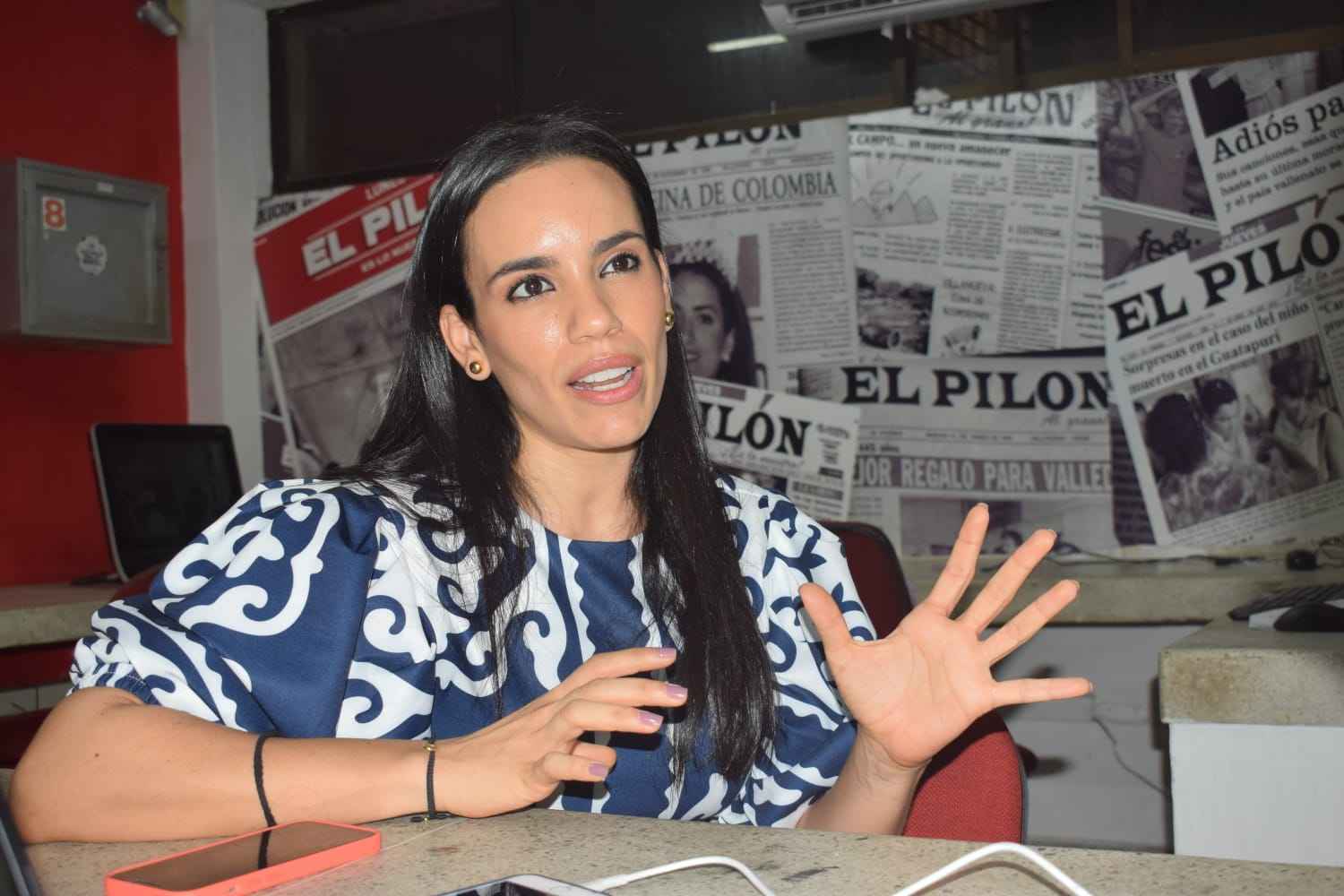Five months ago the implementation of the Strategic Public Transport System, SETP, from Valledupar, whose buses currently transport at least 15,000 passengers per day through 7 routes.
THE PYLON spoke with Katrizza Morelli, manager of the Integrated System of Collective Public Transportation of the city, who defined the bus service as “safe, efficient, inclusive, dignified, comfortable and sustainable”.
130 buses that run on natural gas arrived, but how many of them are operating?
The Valledupar strategic transportation system, in order to fully comply with 100% of its operational design, requires 188 busesof which, SIVA as a public management entity acquired 130 and the transport operator the other 58.
Today, with the 7 routes that we have implemented, we have 103 buses in operation, but really one ends up using more because you have to have a reserve in case you have to take a car to maintenance, another one has to come in. In other words, today practically all public buses are covered, which are the 130 that arrived in October.
With the routes that come, what we are going to implement are the 58 private buses of the operator. Of these, 30 are of a type very similar to those of SIVA: vehicular natural gas and new.
The other 28 are those that were used in the TPC and that still have a remaining useful life. Those 2014 and 2015 vehicles went through a complete rehabilitation process in floors, seats, bodies, air conditioners, and paint to be in the system.
/ PHOTO: COURTESY.
Why haven’t the other 5 routes been implemented?
Because it was time to slow down this gradual implementation process, which we started on December 2, to ensure that citizens really adapt, learn and understand the pedagogy of these routes and prevent users from leaving the system.
We had planned that, more or less, a new route would come into operation every 15 days, but we really couldn’t because when working with human beings we also have to adapt to social behaviors, we had to slow down, not carry out a process to lightly that in the end all the citizens would be lost and did not really know what we had implemented.
Citizens also ask about the 456 whereabouts, when will they be built?
We are going to start the public bidding for $5 billion this month of May, a process that in Colombia takes between 45 and 60 days, and we will immediately start the execution of the contract.
The whereabouts will have vertical signs located in the public space to give all the necessary information about which routes pass and in the center of the city we will have 40 whereabouts type M-10 that are known in Valledupar, are the ones with stainless steel roofs and bench.
You assured in the rendering of accounts that the number of passengers per day is between 15,000 and 16,000, but how many does the system need to be sustainable?
In order for it to be completely sustainable, that is, so that it does not need a subsidy from any of the territorial authorities, the system needs 60,000 passengers.

We are not dreaming of something that Valledupar cannot achieve, because we have already done it when we did not even have a system, schedules, value offer, frequency, comfort, safety and efficiency conditions like ours. Informality moves close to dand 150,000 passengers in the city, it means that the passengers are there, we need them to turn to using the SETP.
When the 12 routes are working, we should have, at least, between 25,000 and 30,000 per daybut still we need grant.
What behaviors have they shown in users?
The routes with the greatest demand are 214 and 562, with around 3,000 passengers. The movement of people is very flat between 5 am and 7 am, then it starts to rise and stays up until 10 am
At 12 noon it rises again until 3 pm, has a slight decrease and returns and rises until 7 pm Between 7 pm and 9 pm it drops considerably because Valledupar does not have a marked nightlife, but covers university students.
The service costs $2,000 to the Vallenato citizens, is it likely that it will increase taking into account the real price?
$3.200 This is what the technical rate gave us with 100% of the implementation, but we all know that nobody is going to pay that money, that is why the Rate Stability Fund was created, where the resources with which both the Government of Cesar and the Government of Cesar the Mayor of Valledupar subsidize the provision of the service.
The authority in managing the rate remains the Department of Transit, the decision of whether the rate goes up or not is hers. On behalf of Siva, which is the managing entity that supervises, monitors and controls the system, surely there will be a recommendation that it increase because the cost of living has grown as shown by the consumer price index and we were not expecting such inflation. high.
How much is the SIVA budget for 2023 and how much has been invested?
$90,000 million. Up to now we only have the project of the southern terminal that as it is being executed, its partial minutes are being paid, the financial execution of this project is between 10 and 15 percent, while in works we are above the 20 percent.
Let’s talk about the construction of the south and north workshop or terminal patios.
The southern terminal is going very well, it started on January 18 and is within the project execution schedule. We hope to move to this terminal, more or less, in the month of September, which will be a relief for the system because Although we require both, at least we will have the one with the largest capacity: 140 vehicles with their own internal service station, administrative part, and maintenance.
We do not have a start date for the northern terminal, we depend on the administration defining the property where this important work will be carried out for the implementation of the system.
What strategies is SIVA implementing so that citizens use the buses more?
We have done everything humanly possible in socialization and pedagogy since before the operation began, with visits to the educational institutions, door to door in the neighborhoods and with the presidents of the boards… On our part we are doing what we can institutionally to show the benefits and the benefits of the system.
For many years they controlled us, and even put pressure on us, ‘for when the system’, that we ‘require it’, that we ‘need it’… What we demanded and waited for so long is here, it’s a reality, so, Please, let’s get on the buses so that the system lasts and is sustainable.
The one who gets on the bus falls in love. You have to change the scheme that I leave 5 minutes before and I arrive, of immediacy, of speed, for the value of life itself. Suddenly people take 5 more minutes, but they are guaranteed that she arrives safe and sound, calm, as she left her house, without smelling ugly or sweating and, above all, safe.
When would you start implementing card payments?
Maximum in one month, the cards are ready, the main sales network will be Supergiros, which has more than 300 pointsWe will also have complementary online networks where people can recharge the card through PayU, PSE, and we are working on an agreement with Davivienda.
In addition, we are going to have a credit ticket, if for some reason you cannot recharge the card at the moment, you can enter the online system and we will give you a credit ticket that will be deducted from your next card recharge.
How many direct jobs has SIVA generated?
so far close to 300 formal jobs between drivers, operators in the yard, on the road, mechanics and all the administrative and technical personnel that are required.
In addition, the city is no longer experiencing the “penny war” because the drivers have their salary with social benefits and overtime and do not have to be running for who picks up the passenger.
By Andrea Guerra Peña / THE PYLON.
@andreaguerraperiodista
